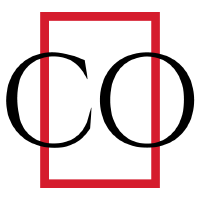Topic Menu
► Topic MenuTopic Editors


Myeloma and Leukemia-Challenges and Current Treatment Options
Topic Information
Dear Colleagues,
After years of stagnation in the field, in recent years, we have entered into a new era in multiple myeloma and acute leukemia therapy with the discovery of many novel agents. This was due to better knowledge of the biology of the diseases, and of the pathogenesis-related pathways, with the advent of new combinations of drugs and new therapy development, together with an improved understanding of the immune system, resulting in great progress in the development of immune therapies for the treatment of patients, including monoclonal and bispecific antibodies, and CAR-T cell approaches. The numerous ongoing trials evaluating these new opportunities, also considering real-life experiences, are helping to confirm the efficacy and tolerability of these drugs in daily clinical practice. This Special Issue aims to focus on novel agents and their combinations. Focus will be placed on the efficacy of novel drugs and promising combination approaches to further improve outcomes in the treatment of patients with multiple myeloma and acute leukemia.
Dr. Giovanni Martinelli
Dr. Claudio Cerchione
Topic Editors
Keywords
- acute leukemia
- acute myeloid leukemia
- acute lymphoblastic leukemia
- novel agents
- target therapy
- CAR-T cellular therapy
Participating Journals
| Journal Name | Impact Factor | CiteScore | Launched Year | First Decision (median) | APC | |
|---|---|---|---|---|---|---|

BioMedInformatics
|
- | - | 2021 | 21 Days | CHF 1000 | Submit |

Cancers
|
5.2 | 7.4 | 2009 | 17.9 Days | CHF 2900 | Submit |

Current Oncology
|
2.6 | 2.6 | 1994 | 18 Days | CHF 2200 | Submit |

Hemato
|
- | - | 2020 | 28.1 Days | CHF 1000 | Submit |

Hematology Reports
|
0.9 | 1.1 | 2009 | 38.9 Days | CHF 1600 | Submit |

MDPI Topics is cooperating with Preprints.org and has built a direct connection between MDPI journals and Preprints.org. Authors are encouraged to enjoy the benefits by posting a preprint at Preprints.org prior to publication:
- Immediately share your ideas ahead of publication and establish your research priority;
- Protect your idea from being stolen with this time-stamped preprint article;
- Enhance the exposure and impact of your research;
- Receive feedback from your peers in advance;
- Have it indexed in Web of Science (Preprint Citation Index), Google Scholar, Crossref, SHARE, PrePubMed, Scilit and Europe PMC.

